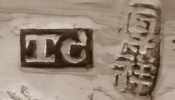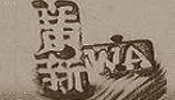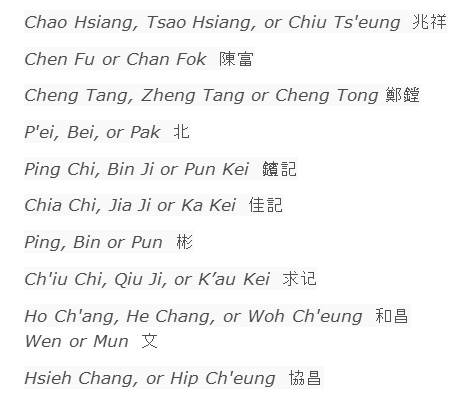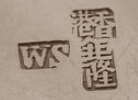CHINESE EXPORT SILVER
By the late 18th/early 19th centuries, the phenomenon we now know as Chinese Export Silver was well-entrenched. It happened simply because silver, as a material, was more plentiful in China than anywhere else and the art of silversmithing had been perfected to such a high level. It was also relatively cheap, compared to Western counterparts.
This capability was quick to be recognized; merchants and sea-captains began to bring western silver items as examples to be copied, while the demand for bespoke items also increased. It is because of this surge of requests to "copy" that we find a peculiarly Chinese Export Silver circumstance mainly in relation to silver created in the 1785/1840 period.
The phenomenon is often referred to as "pseudo-hallmarks" and most Chinese silversmiths adopted them. But, initially they did so unwittingly, since when they were asked to faithfully copy items brought from the West, many of them had British hallmarks - and so the silversmiths copied "faithfully" hallmarks and all! Yet, not fully understanding the significance of the information these marks imparted, a degree of artistic license was applied; date letters were replaced by a letter that might have been the first Latin letter of the silversmith's name, often using local transcribing. Nearly all silver created during this period was of Western form.
It is during the 1840/1880 period of Chinese Export Silver making we see a change in appearance of the silver produced and the marks makers used on them. Chinese motifs begin to appear on items. It is also during this period we see more silversmiths appearing. Makers' marks also changed in as much as some makers began to use marks that combined Latin initials of the maker along with a mark in Chinese characters or ideograms of the actual artisan silversmith that carried out the work under the roof of the master silversmith. This latter mark is known as the "chopmark". This indicates that makers probably ran workshops where several experienced silver makers operated until the master artisan silversmith,the man behind the Chinese chopmark, finished it.
The 1880/1940 manufacturing period of Chinese Export Silver is where we find a larger number of known silversmiths operating. As with the preceding periods, makers' marks are equally non-consistent in format.
In any case, keep in mind that name or initials in Latin characters are not the name of the actual maker. They will almost certainly identify the retail silversmith or, more correctly, the name under which he trades.
A - B -C - D - E - F
G - H - I - J - K
L - M - N - O - P - Q - R - S
T - U - V - W - X - Y - Z
|
CHINESE EXPORT SILVER MAKER'S MARKS
T - U - V - W - X - Y - Z
|
T

|
Tu Hopp - Canton
active c. 1830-1840
|
|
TACKHING


|
Tackhing - Hong Kong
active late 19th/early 20th c.
|
|
TAI

|
Tai Shan - Bejing
active c. 1900
|
|
TAIKUT

|
Taikut - Hong Kong
active c. 1870

(Chinese name)
|
|
TC TUCK CHANG




|
Tuck Chang & Company Ltd - Shanghai
 (Chinese name) active 1890-1915 (Chinese name) active 1890-1915
|
|
TS T.S

|
Tin Sheng, Tin Shing, or Tien Sheng, 46 Stanley Street, Queen's Road Central, Hong Kong
active c. 1870-1925
|
|
TSUN TSUN

|
Tsun Tsun - Shanghai
operated out of Shanghai 1926-40 as a Chinese registered department store
|
|
W

|
Wong Shing, 15 Old China Street, Canton
active c. 1820-1860
|
|
WA



|
unidentified, Canton
active c.1825-1875
|
WC

|
Wing Chung - Hong Kong
active c.1850-1900
|
|
WE WE WC

|
WE WE WC, Canton
active c. 1820-1880
a Chinese silversmith who copied British hallmarks when requested to faithfully copy items brought to Canton by sea captains and merchants.
It is supposed the maker copied a hallmarked item made by English silversmiths William
Eley, William Fearn and William Chawner (WE WF WC) mistaking the "F" of "Fearn" for an "E" and continuing to use it for 60 years
|
|
WF

|
Wing Fat - Hong Kong and Canton
active c. 1900
|
|
WH WANG HING
![Chinese Export silver maker's mark: Wang Hing & Company - Hong Kong, Canton [Guangzhou] and Shanghai Chinese Export silver maker's mark: Wang Hing & Company - Hong Kong, Canton [Guangzhou] and Shanghai](CHINESEEXPORT8.2.jpg)
![Chinese Export silver maker's mark: Wang Hing & Company - Hong Kong, Canton [Guangzhou] and Shanghai Chinese Export silver maker's mark: Wang Hing & Company - Hong Kong, Canton [Guangzhou] and Shanghai](CHINESEEXPORT8.1.jpg)
![Chinese Export silver maker's mark: Wang Hing & Company - Hong Kong, Canton [Guangzhou] and Shanghai Chinese Export silver maker's mark: Wang Hing & Company - Hong Kong, Canton [Guangzhou] and Shanghai](CHINESEEXPORT16.jpg)
![Chinese Export silver maker's mark: Wang Hing & Company - Hong Kong, Canton [Guangzhou] and Shanghai Chinese Export silver maker's mark: Wang Hing & Company - Hong Kong, Canton [Guangzhou] and Shanghai](CHINESEEXPORT85.jpg)
![Chinese Export silver maker's mark: Wang Hing & Company - Hong Kong, Canton [Guangzhou] and Shanghai Chinese Export silver maker's mark: Wang Hing & Company - Hong Kong, Canton [Guangzhou] and Shanghai](CHINESEEXPORT96.jpg)
![Chinese Export silver maker's mark: Wang Hing & Company - Hong Kong, Canton [Guangzhou] and Shanghai Chinese Export silver maker's mark: Wang Hing & Company - Hong Kong, Canton [Guangzhou] and Shanghai](CHINESEEXPORT52.jpg)
![Chinese Export silver maker's mark: Wang Hing & Company - Hong Kong, Canton [Guangzhou] and Shanghai Chinese Export silver maker's mark: Wang Hing & Company - Hong Kong, Canton [Guangzhou] and Shanghai](CHINESEEXPORT53.2.jpg)
![Chinese Export silver maker's mark: Wang Hing & Company - Hong Kong, Canton [Guangzhou] and Shanghai Chinese Export silver maker's mark: Wang Hing & Company - Hong Kong, Canton [Guangzhou] and Shanghai](CHINESEEXPORT66.jpg)
![Chinese Export silver maker's mark: Wang Hing & Company - Hong Kong, Canton [Guangzhou] and Shanghai Chinese Export silver maker's mark: Wang Hing & Company - Hong Kong, Canton [Guangzhou] and Shanghai](CHINESEEXPORT67.jpg)
![Chinese Export silver maker's mark: Wang Hing & Company - Hong Kong, Canton [Guangzhou] and Shanghai Chinese Export silver maker's mark: Wang Hing & Company - Hong Kong, Canton [Guangzhou] and Shanghai](CHINESEEXPORT70.jpg)
![Chinese Export silver maker's mark: Wang Hing & Company - Hong Kong, Canton [Guangzhou] and Shanghai Chinese Export silver maker's mark: Wang Hing & Company - Hong Kong, Canton [Guangzhou] and Shanghai](CHINESEEXPORT156.jpg)
|
Wang Hing & Company,
Zetland House, 10 Queen's Road, Hong Kong;
1 Sai Sing Street, Canton (Guangzhou) and Shanghai
![Chinese Export silver maker's mark: Wang Hing & Company - Hong Kong, Canton [Guangzhou] and Shanghai Chinese Export silver maker's mark: Wang Hing & Company - Hong Kong, Canton [Guangzhou] and Shanghai](CHINESEEXPORT16.2.jpg) (Chinese name) (Chinese name)
active c. 1854-1925
|
workshop/artisan marks

|
WHS

|
Wen Hua Shun - possibly Peking
 (Chinese name) active 1900-1925 (Chinese name) active 1900-1925
|
|
WING CHEONG

|
Wing Cheong - Hong Kong
active c. 1890
|
|
WN

|
Wing Nam & Company, 65 Queen s Road-Hong Kong (probably a retailer)
 (Chinese name) (Chinese name)
active 1890-1940
|
workshop/artisan marks


|
|
W.O WING ON CO (possibly)


|
Wing On & Company, Des Voeux Road, Hong Kong
 (Chinese name) active 1900-1950 (Chinese name) active 1900-1950
|
|
WOSHING WS



|
Woshing, Kiangse Road, Shanghai
 (Chinese name) (Chinese name)
active 1875-1915
|
workshop/artisan marks

|
|
YOK SANG

|
unidentified
| |
YS

|
Yatshing - Canton
active c. 1800-1850
|
|
ZEE SUNG


|
Zee Sung - Shanghai
active c. 1910-1950
|
|
ZW ZEEWO ZEEWO SHANGHAI

|
Zee Wo & Company - 370 Honan Road - Shanghai
 (Chinese name) (Chinese name)
active c. 1900-1940
|
workshop/artisan marks

|
CHINESE EXPORT SILVER MAKERS
A - B -C - D - E - F
G - H - I - J - K
L - M - N - O - P - Q - R - S
T - U - V - W - X - Y - Z
|
|
|

www.silvercollection.it |
This is a page of A Small Collection of Antique Silver and Objects of vertu, a 1500 pages richly illustrated website offering all you need to know about antique silver, sterling silver, silverplate, Sheffield plate, electroplate silver, silverware, flatware, tea services and tea complements, marks and hallmarks, articles, books, auction catalogs, famous silversmiths (Tiffany, Gorham, Jensen, Elkington), history, oddities ...
HOME - SITE MAP - SILVER DICTIONARY - COOKIES CONSENT AND PRIVACY |
| |